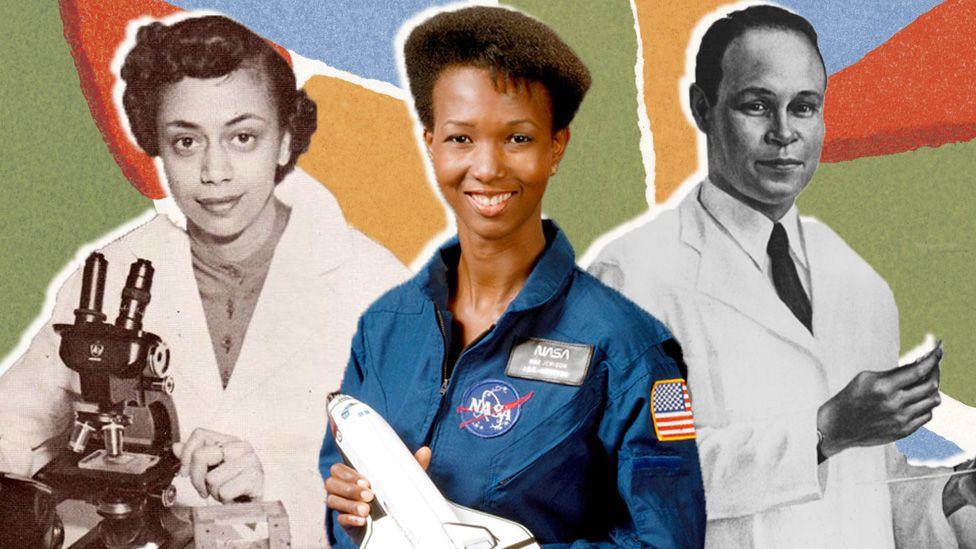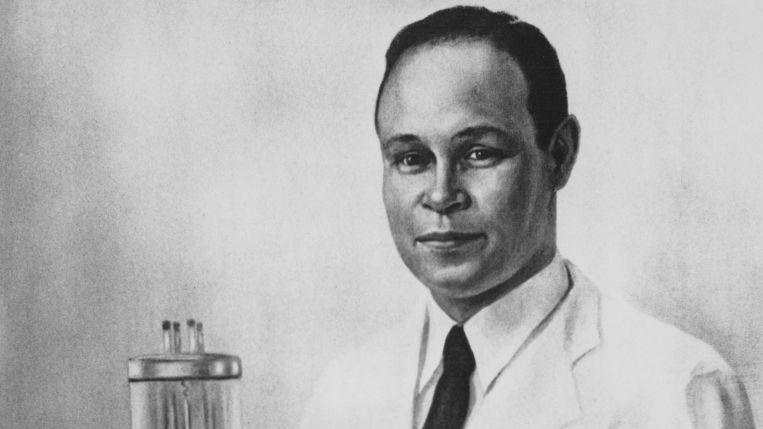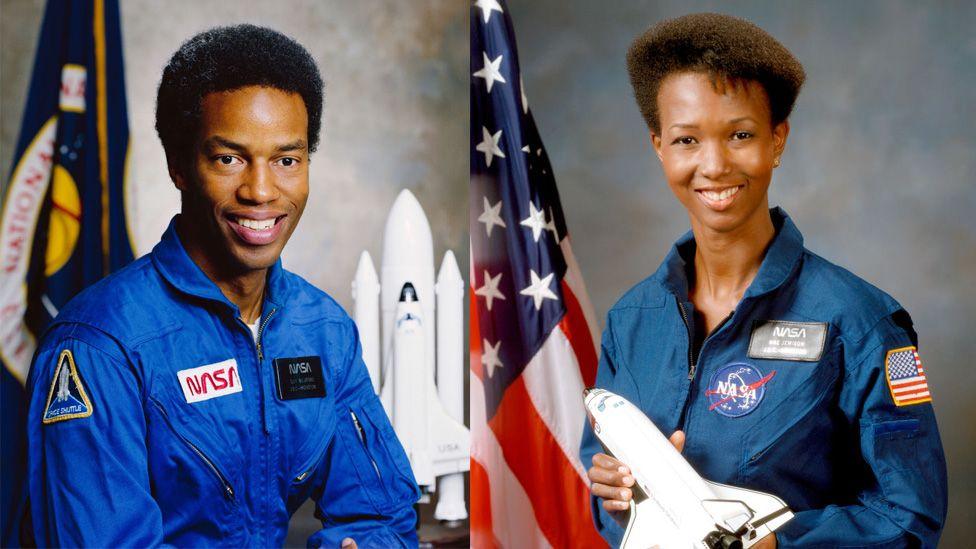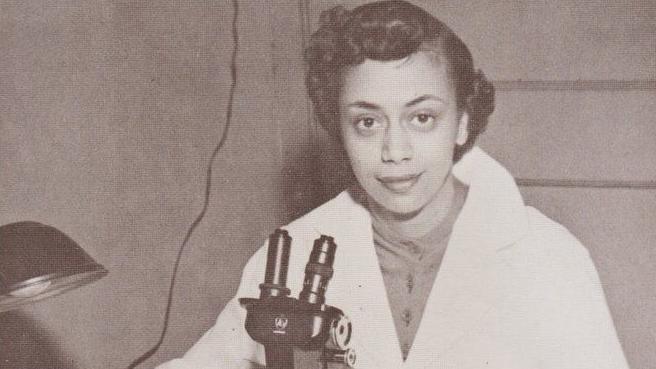Black History Month: Amazing scientists who helped change the world

Meet some of the incredible scientists who have helped to change the world!
- Published
October is Black History Month in the UK, an event that has been celebrated nationwide for more than 30 years.
It was originally founded as a way to recognise the contributions that people of African and Caribbean backgrounds have made to the UK over many generations.
Now, Black History Month has expanded to include the history of not just African and Caribbean people but all black people.
We wanted to take a look at some incredible black scientists who helped to change the world we live in today, through their research, passion and inventions.
Read on to find out more...
Amazing black women you should know about
- Published26 September 2023
The black men who made history in Britain
- Published28 September 2023
Dr Charles Richard Drew

Dr Charles Richard Drew saved thousands of lives with his research
Dr Charles Richard Drew was an African-American surgeon, who was born in 1904 in Washington DC.
He became one of the most important scientists of the 20th Century, when he created a way to store human blood for longer, by preserving the plasma in it.
His work helped to save thousands of lives during the Second World War, and he was responsible for starting the ‘Blood for Britain’ campaign, which collected blood to send to Britain to help injured people and soldiers.
Dr Drew was also an activist campaigning for racial equality.
In 1941 he became the first director of the American Red Cross Blood Bank, which was responsible for giving blood to the U.S. Army and Navy.
However, they refused to accept blood donations from black people - meaning Dr Drew could not donate to his own scientific creation - until 1942, and then only accepted donations from black people if their blood was stored separately from white people. This policy stayed in place until 1950.
Outraged by their racist attitudes, Dr Drew quit the job in protest in 1942 and returned to his old university, where he became a teacher and trained many black surgeons, campaigning for better treatment and opportunities for black people in the medical profession.
Guion Bluford and Mae Carol Jemison

Dr Guion “Guy” Bluford and Dr. Mae Jemison in their Nasa uniforms
Dr Guion “Guy” Bluford and Dr Mae Jemison were the first African-Americans to travel to space.
A trained fighter pilot, with a degree in aerospace engineering, Guy Bluford applied to Nasa's first competition to become an astronaut, and was selected from 10,000 people.
On August 30 1983, he blasted off on the STS-8 mission, becoming the first African American in space.
After this Guy flew to space three more times, where he spent more than 28 days performing scientific experiments.
He retired from Nasa in 1993, and has since given many talks to children around the world about what it is like to be an astronaut.
Dr. Mae Jemison is a trained medical doctor, with a degree in chemical engineering, and was one of only 15 people accepted onto Nasa’s astronaut training programme in 1987.
On 12 September 1992 she blasted off on the Endeavour shuttle, becoming the first African-American woman in space.
She spent eight days in space and carried out 44 science experiments with her crewmates.
Dr Jemison retired from Nasa a year later in 1993, and founded her own company called the Jemison Group, which creates new technologies, especially to help developing countries.
She also created an international science camp for young people called The Earth We Share, and became a science ambassador, aiming to make sure that science and technology are accessible to everyone.
Dr. Jewel Plummer Cobb

Dr. Jewel Plummer Cobb made breakthroughs in cancer research
Dr. Jewel Plummer Cobb was a trailblazing US biologist whose research into cancer treatments is still used today.
Born in 1924, in Chicago, Dr Plummer Cobb had to deal with racial discrimination whilst studying for her college and university degrees in biology.
After graduating, she went on to specialise in studying cancer research and treatments.
She became one of the first scientists to show evidence that melanin, a pigment found in skin and hair (people with darker skin tones have more melanin, and lighter skin tones have less), could shield people from UVA/UVB rays - which come from the Sun and can cause skin cancer.
Dr Plummer Cobb also teamed up with female scientist Dr Jane Wright to discover a drug that could be used to treat some skin cancers, lung cancers, and childhood leukemia, and is still used in chemotherapy treatment today.
She later went on to become a professor, and campaigned for more equality in science, inspiring many others to become scientists.
“I think I’d like to be remembered as a Black woman scientist who cared very much about what happens to young folks, particularly women going into science,” she said.
Dr Maggie Aderin-Pocock MBE

Dr Maggie Aderin-Pocock has shared her passion for space with hundreds of thousands of children
Dr Maggie Aderin-Pocock MBE is an award-winning space scientist, author and presenter.
Born in 1968 in London, Maggie studied physics and mechanical engineering at university, and has spoken about how her dyslexia affected her at school.
Throughout her career, she has worked on many projects, including making a high-quality spectrograph - a tool which allows scientists to see different types of light through a camera - for the Gemini telescope at an observatory in Chile, in South America.
She also worked on satellites helping to investigate climate change, and the James Webb Space Telescope.
Maggie is very passionate about sharing her knowledge and enthusiasm for space, science and engineering, and has worked as a TV presenter on The Sky at Night, Stargazing and Out of This World, as well as visiting many schools.
She received an MBE from the Queen in 2009 for her services to science and science education.
George Washington Carver

George Washington Carver helped to revolutionise the US farming industry with his love of plants
George Washington Carver was a US scientist and inventor whose passion for plants revolutionised the farming industry in the early 20th Century, as well as discovering hundreds of uses for peanuts (but not peanut butter!), sweet potatoes and soybeans.
Born into slavery, George's birth date is unknown, but some historians think it was around 1864 - just before slavery was ended in the US in 1865.
When he was around 13-years-old, George left his hometown to go to school and worked hard to get his education.
In 1894 he became the first Black person to graduate from Iowa State College, where he studied botany - the scientific study of plants - and later earned a master’s degree in agriculture.
George went on to become a teacher and researcher at Tuskegee University for many years, where he developed techniques to improve the quality of farming soil, and give farmers different plants to sell, by swapping out cotton plants with different ones, like sweet potatoes or peanuts each season.
He also invented 325 different uses for peanuts, 108 for sweet potatoes and 75 products made from pecans.
Some of the products he created include chilli sauce, instant coffee, shaving cream, and Worcestershire sauce.
His successful techniques soon made him famous, and he met with three American presidents in his lifetime - Theodore Roosevelt, Calvin Coolidge and Franklin Roosevelt - and the Crown Prince of Sweden even studied with him.
After his death, Carver became the first Black scientist to have a national monument made of him, which was built near to his birthplace in Missouri.
